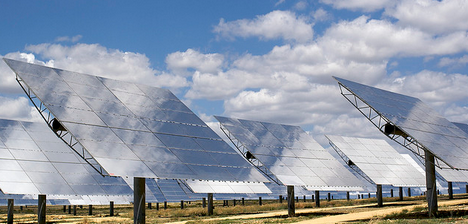
By Sami Grover
The UK may be backing off from large-scale solar power, but elsewhere there seems to be a surge in installations. From the world's first 24/7 power plant in Spain, through Google's investment in solar-thermal generation in the Mojave, to the $2bn in federal loan guarantees for large-scale solar, mega-installations of solar thermal and solar PV will only become more and more com mon in the coming years. But how do these ambitious projects dove-tail with more distributed, small-scale applications? And what's the environmental impact of covering hundreds of acres with shiny solar panels? Renewable Energy World takes a look at how big is too big when it comes to solar?
Organizations against the use of "big solar" have cropped up in a few places. Janine Blaeloch, co-founder of Solar Done Right, an organization that takes particular issue with putting large-scale solar on public lands, wrote an op-ed for RenewableEnergyWorld.com that refuted four beliefs about large-scale solar power development. First, she said the idea that we need big solar in order to meet our RPS goals is simply not true. "Even with its small size and low solar insolation, Germany installed about 3,000 MW of mostly decentralized PV in 2009 alone — and in 2010, about 6,500 MW of distributed PV," she pointed out.
Of course, as with most things in sustainability, this is unlikely to be a simple either/or question. While the ecological impact and land footprint of large-scale solar should not be ignored, there are signs that large-scale and distributed solar can coexist—just after Google announced its major solar-thermal investment, it also launched a huge investment in residential solar too.
And from the concrete-free foundations and integrated grazing on France's solar farms to the tantalizing prospect of solar double-cropping with agriculture, there are plenty of ways that big solar can also have a much smaller impact.
Article courtesy of treehugger.com

